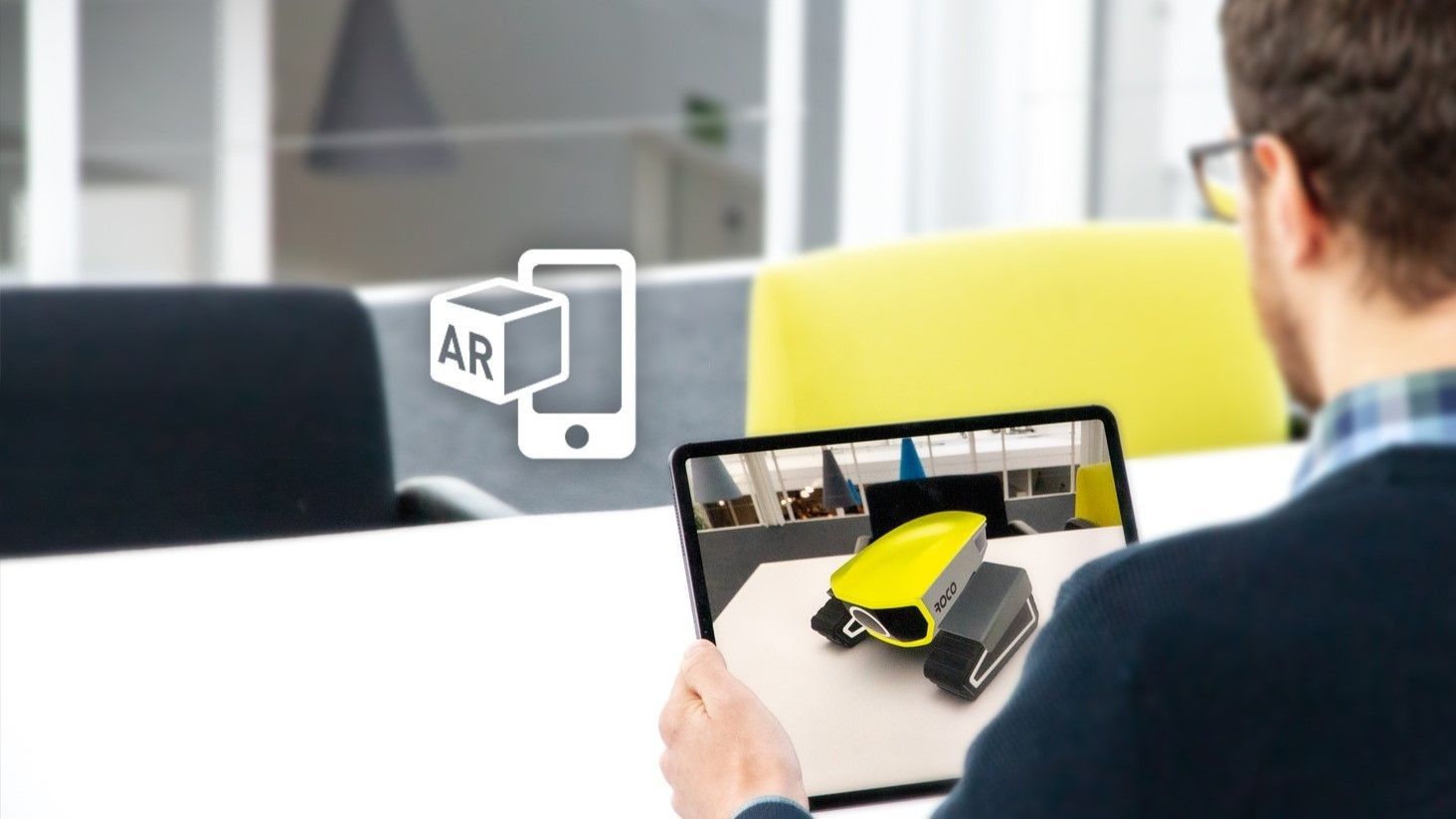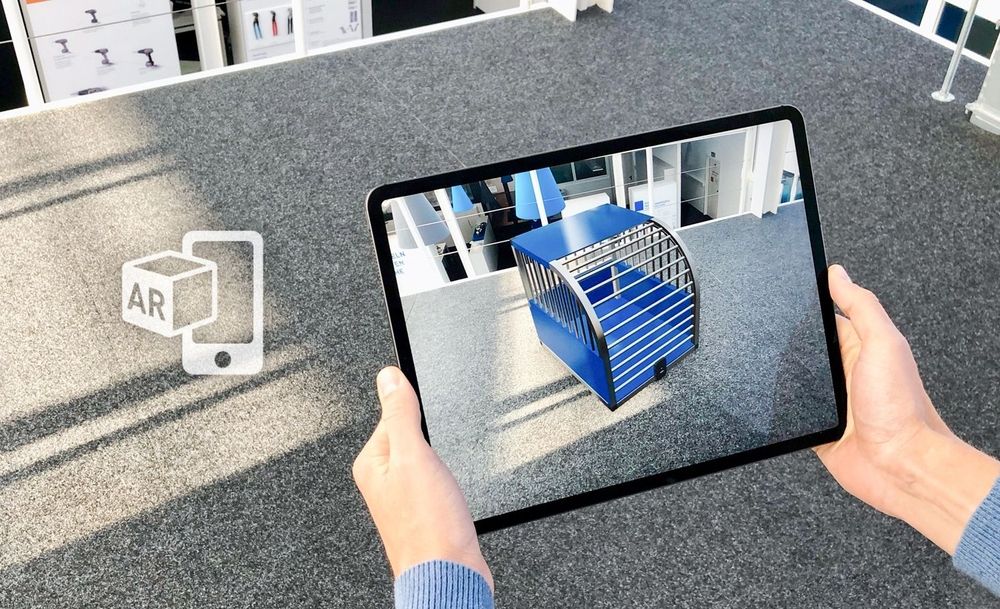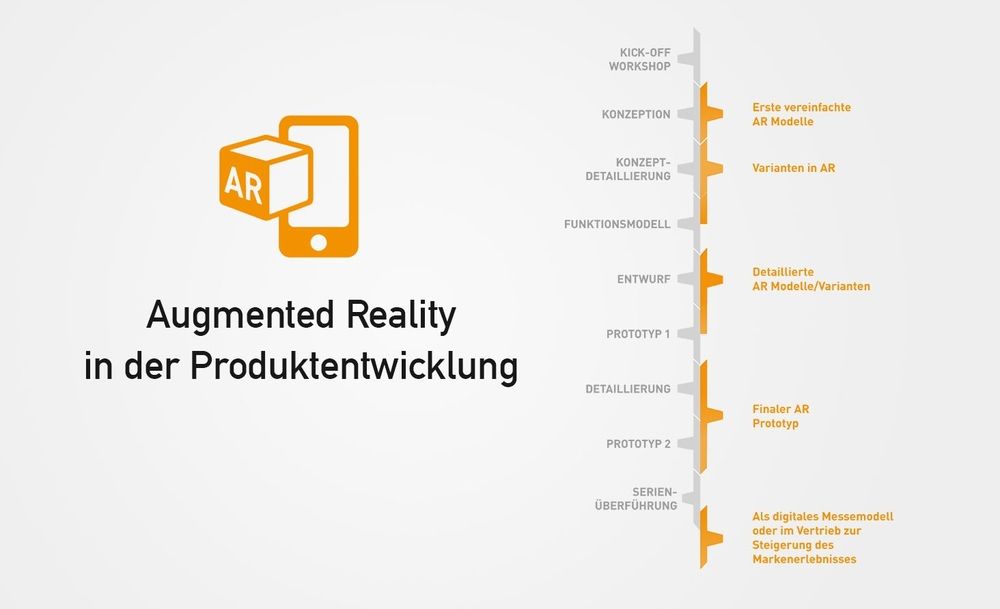With AR visualizations, BUSSE now also offers the possibility of using virtual 3D prototypes in the development process and in series production as a marketing tool to support sales and decision-making. Augmented reality brings products almost within reach even before conventional model making - different colors and features can also be displayed and projected directly into the later environment.
On the way to a successful product, physical prototypes are an important intermediate step in order to evaluate and test function and design in reality. This is the only way to record operation and ergonomics and define improvements for the series product. However, model construction naturally requires a lead time and a corresponding budget, and not all possible product configurations can be represented, only exemplary variants.
In this case, the technical possibilities of augmented reality can be put to very good use: It offers an efficient way to supplement or, in some situations, even replace conventional prototyping.
At BUSSE Design+Engineering, digital AR prototypes are already integrated into the product development process, which leads to efficient added value in product development.
What exactly is augmented reality?
Augmented reality (AR) stands for the expansion of reality with digital information. State-of-the-art devices such as smartphones, tablets and smart glasses combine the real world with digital content. This is made possible by advanced camera technologies and artificial intelligence, which is used to measure the environment. Following this analysis, virtual objects can be inserted into the viewer's digital environment in their original size.
AR became really well known thanks to the Pokémon GO game app, in which small fantasy creatures can be caught in reality. Another example is the IKEA Place app, which allows furniture to be placed virtually at home before purchase.
Augmented reality is now increasingly finding its way onto our smartphones and offers a variety of different and impressive functions. There are also other exciting use cases in the industrial environment. In addition to smart devices, smart glasses, i.e. glasses with display technology, are increasingly being used here. This leaves hands free and allows specialist personnel to continue working as usual. For example, AR provides helpful information during assembly and maintenance work or when navigating through a warehouse.
**Added value for product development
**The special thing about digital prototypes: AR displays the products in their original size and in the respective usage environment. Colors and material appearance as well as light and shadow effects tailored to the environment ensure that the virtual design models can be integrated as if they were close enough to touch.
Companies can use virtual prototypes during the entire product development process to obtain a fast and realistic representation.
To evaluate the design, they can compare virtual models with existing series products or products from competitors to check whether or how much they differ from each other. AR prototypes are also very helpful in the development of packaging designs, as designs can be assessed quickly and faithfully.
With virtual models, coordination and decisions can sometimes be made much faster than with a physical prototype, as less effort is required to create them.
BUSSE Design+Engineering also uses augmented reality prototypes in the area of UI/UX development. Visual design drafts are projected onto the display of a still virtual product in order to demonstrate to customers during product development how their interface will later look during operation.
Augmented reality renderings of products can also be useful for BUSSE Design+Engineering customers after the series launch. For example, products can be presented to potential customers in their original size during sales. The one-to-one representation can also be used to precisely determine the subsequent location - without the need for time-consuming surveying of the surroundings.
Other possible applications include AR representations for virtual trade fair models, design models for marketing documents or as visual support in assembly instructions.
Of course, a virtual prototype does not completely replace the physical prototype. Although the design and size can be assessed very well with the virtual representation, AR cannot yet keep up with real prototypes in terms of haptics or ergonomics. The conventional prototype is still indispensable for bringing a mature product onto the market. However, digital visualization in an environmental context is an efficient and valuable addition to product development.
Test AR models now!










